Flower in a Crannied Wall, a poem by Alfred, Lord Tennyson, paints a vivid picture of a delicate flower thriving amidst adversity. Through its evocative imagery and profound symbolism, the poem explores themes of resilience, beauty, and the enduring power of nature.
This Victorian-era masterpiece delves into the significance of nature, reflecting the cultural values and social context of the time. Its exploration of the flower’s symbolism invites readers to contemplate the human spirit’s ability to find hope and beauty in the face of challenges.
Poetic Interpretation: Flower In A Crannied Wall
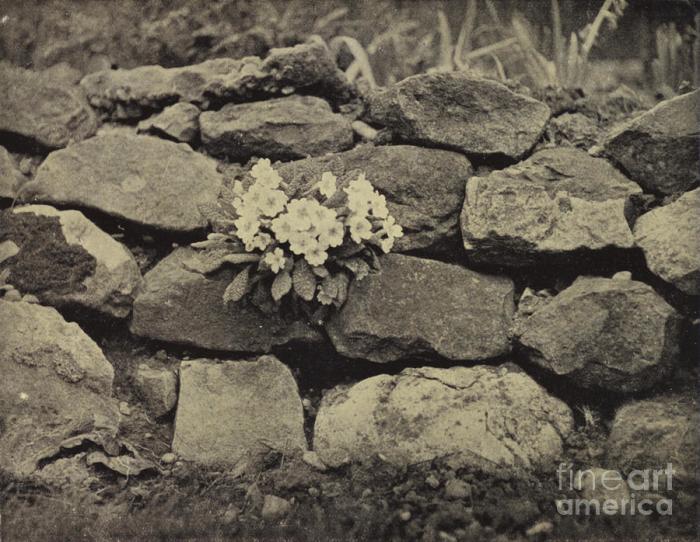
The flower in the poem is a symbol of resilience and beauty in adversity. It represents the ability of life to thrive even in the most challenging circumstances.
The imagery of the flower is described as “a meek” and “lonely flower,” suggesting its humble and solitary nature. Despite its humble appearance, the flower is “born to blush unseen,” indicating its inner strength and beauty.
Imagery and Metaphors
The poet uses several metaphors to describe the flower. It is described as a “diamond in the rough,” suggesting that its true value is hidden beneath its humble exterior. It is also described as a “star,” suggesting that it is a source of light and hope in the darkness.
Historical Context
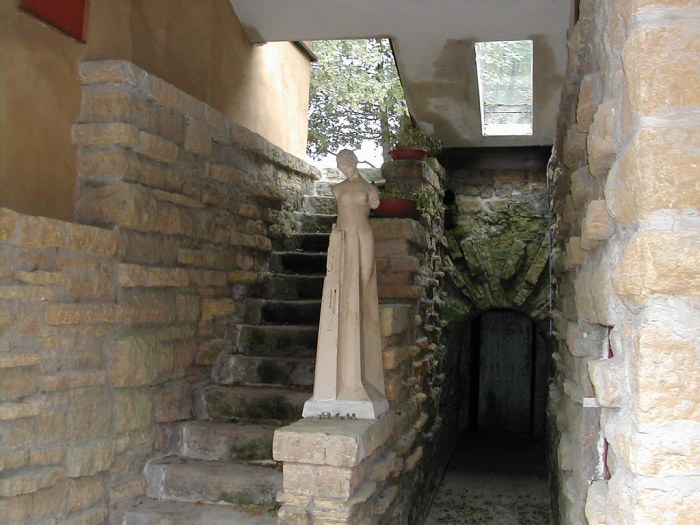
The Victorian era, which spanned from 1837 to 1901, was a period of significant social, cultural, and economic change in Britain. This era witnessed the rise of industrialization, urbanization, and the expansion of the British Empire. These transformations had a profound impact on the literature of the time, including Tennyson’s poem, “Flower in the Crannied Wall.”
The delicate flower that blooms amidst the cracks of a stone wall, a testament to resilience and beauty, is a reminder that even in the most challenging circumstances, life can find a way. Much like the ap psychology unit 4 frq explores the complexities of human behavior, the flower in the crannied wall symbolizes the indomitable spirit that resides within us all.
During the Victorian era, there was a widespread fascination with nature and the natural world. This fascination was reflected in the literature of the time, which often featured detailed descriptions of landscapes, plants, and animals. Nature was seen as a source of beauty, wonder, and inspiration.
It was also seen as a refuge from the hustle and bustle of modern life.
Nature and Social Values
The flower in Tennyson’s poem reflects the Victorian fascination with nature. The flower is described as a “lonely” and “humble” creature, yet it is also seen as a source of beauty and wonder. The flower’s ability to thrive in a harsh environment is seen as a symbol of resilience and hope.
This reflects the Victorian belief in the power of nature to overcome adversity.
The flower also reflects the Victorian belief in the importance of social hierarchy. The flower is described as being “in the crannied wall,” which suggests that it is not a part of the mainstream of society. This reflects the Victorian belief that society was divided into different classes, with the upper classes being seen as superior to the lower classes.
Literary Analysis
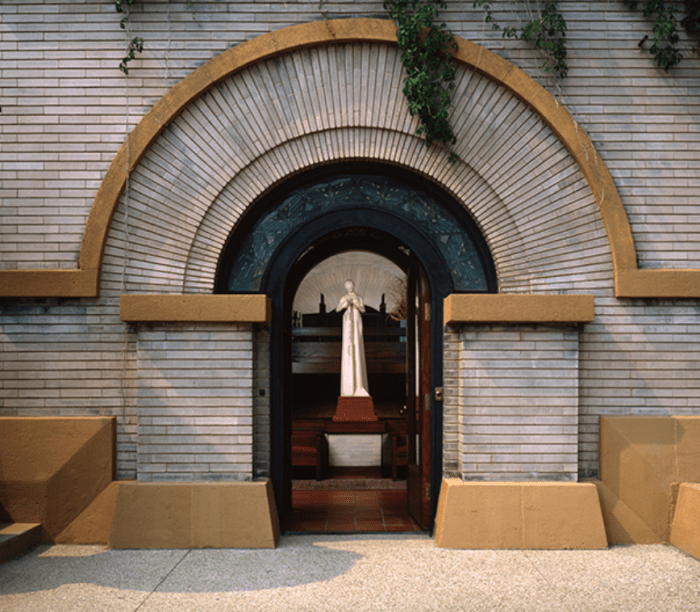
The poem’s structure is simple yet effective. It consists of four stanzas, each with four lines. The lines are written in iambic trimeter, a meter that gives the poem a natural, flowing rhythm. The rhyme scheme is ABAB, which creates a sense of unity and coherence within each stanza.
Tennyson also uses several poetic devices to enhance the poem’s meaning and impact. For example, he uses alliteration in the first line (“Flower in a crannied wall”) to create a sense of texture and weight. He also uses personification in the second stanza, when he describes the flower as “a small, sweet world.”
This device gives the flower a sense of life and agency, and it helps to emphasize its importance.
Use of Symbolism
The flower in the poem is a powerful symbol. It represents the beauty and resilience of nature, even in the most unexpected places. The fact that the flower is growing in a crannied wall suggests that it is able to thrive even in the most difficult circumstances.
This is a powerful message of hope and inspiration, and it is one that has resonated with readers for generations.
Symbolism and Allegory
The poem is rife with symbols and allegories that enhance its meaning. The flower itself is a potent symbol of hope, faith, and perseverance. It stands as a testament to the resilience of life, flourishing in even the most challenging of circumstances.
Flower as a Symbol of Hope
The flower’s ability to bloom in the face of adversity symbolizes hope. It reminds us that even in the darkest of times, there is always the possibility of beauty and growth. The flower’s delicate petals and vibrant colors evoke a sense of optimism and the belief that better days lie ahead.
Flower as a Symbol of Faith, Flower in a crannied wall
The flower’s steadfastness in the face of adversity can be interpreted as a symbol of faith. It represents the unwavering belief in something greater than oneself, whether it be a higher power, a cause, or a dream. The flower’s ability to withstand the elements and continue to bloom symbolizes the strength of faith, even in the face of challenges.
Flower as a Symbol of Perseverance
The flower’s determination to survive and thrive in a harsh environment is a powerful symbol of perseverance. It teaches us that no matter how difficult the obstacles we face, we must never give up on our dreams. The flower’s resilience reminds us that with perseverance, anything is possible.
Nature and Environment
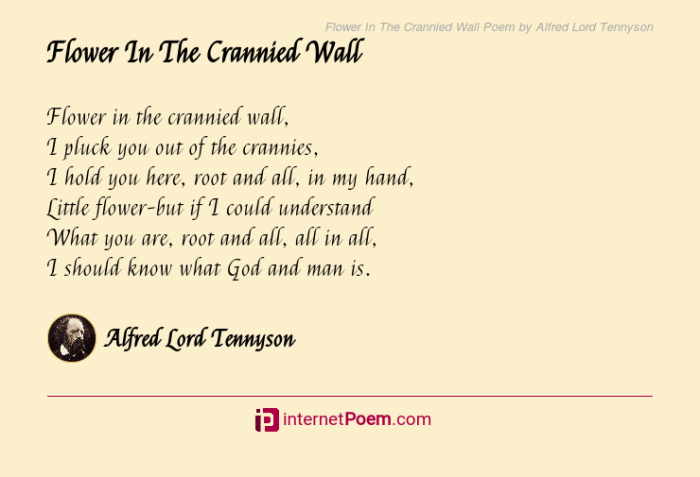
In “Flower in a Crannied Wall,” nature plays a pivotal role, with the flower serving as a symbol of the natural world’s beauty and fragility. The poem emphasizes the importance of preserving and protecting the environment, highlighting its interconnectedness with human existence.
Nature’s Role
- The flower represents the resilience and beauty of nature, thriving despite the harsh conditions of a crannied wall.
- Nature is depicted as a source of solace and wonder, providing a sanctuary for the human spirit amidst the complexities of urban life.
Importance of Preservation
- The poem suggests that the destruction of nature, like the potential loss of the flower, diminishes the richness and diversity of the world.
- It emphasizes the responsibility humans have to safeguard the environment for future generations, ensuring its beauty and vitality.
Personal Interpretation
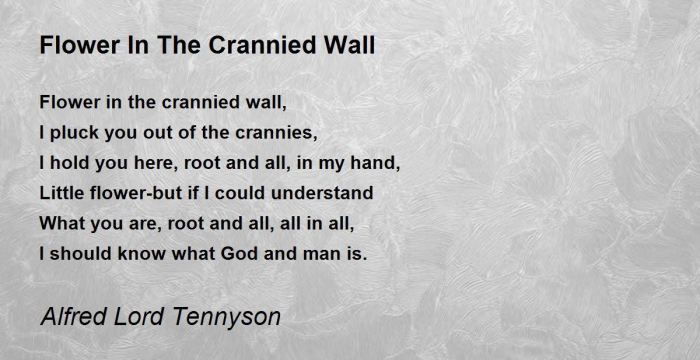
Tennyson’s poem has profoundly resonated with me on both an emotional and intellectual level. The flower’s tenacity and resilience in the face of adversity mirrors my own struggles and triumphs in life.
Like the flower, I have encountered challenges that threatened to crush my spirit. Yet, I have learned to draw strength from my inner resolve and to find solace in the beauty of the world around me. The poem reminds me that even in the most barren of circumstances, there is always hope and the possibility of growth.
Lessons and Insights
- The importance of perseverance and resilience in the face of adversity.
- The beauty and wonder that can be found in the smallest and most unexpected places.
- The interconnectedness of all living things and the need to respect and cherish our natural environment.
Helpful Answers
What is the symbolic meaning of the flower in the poem?
The flower represents resilience, beauty in adversity, and the enduring power of nature.
How does the poem reflect the Victorian era?
The poem reflects the Victorian emphasis on nature, morality, and the importance of social order.
What poetic devices are used in the poem?
The poem uses rhyme, meter, alliteration, and metaphors to create a vivid and memorable image.